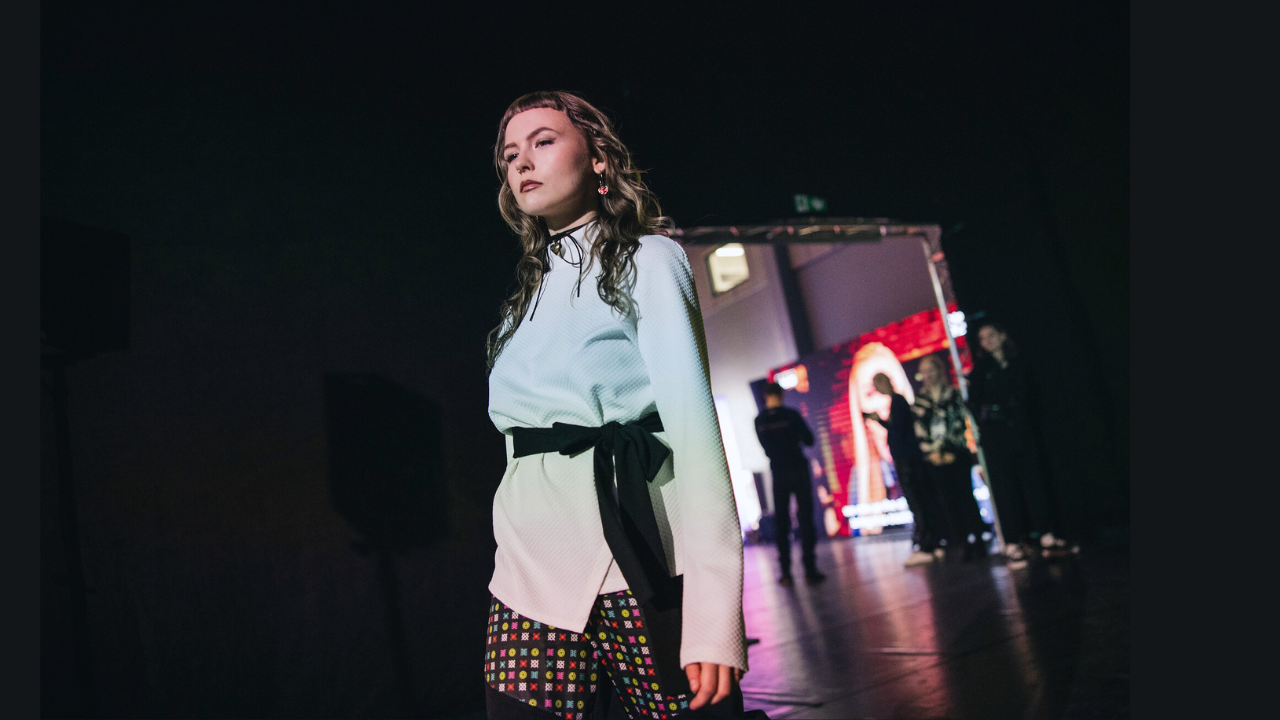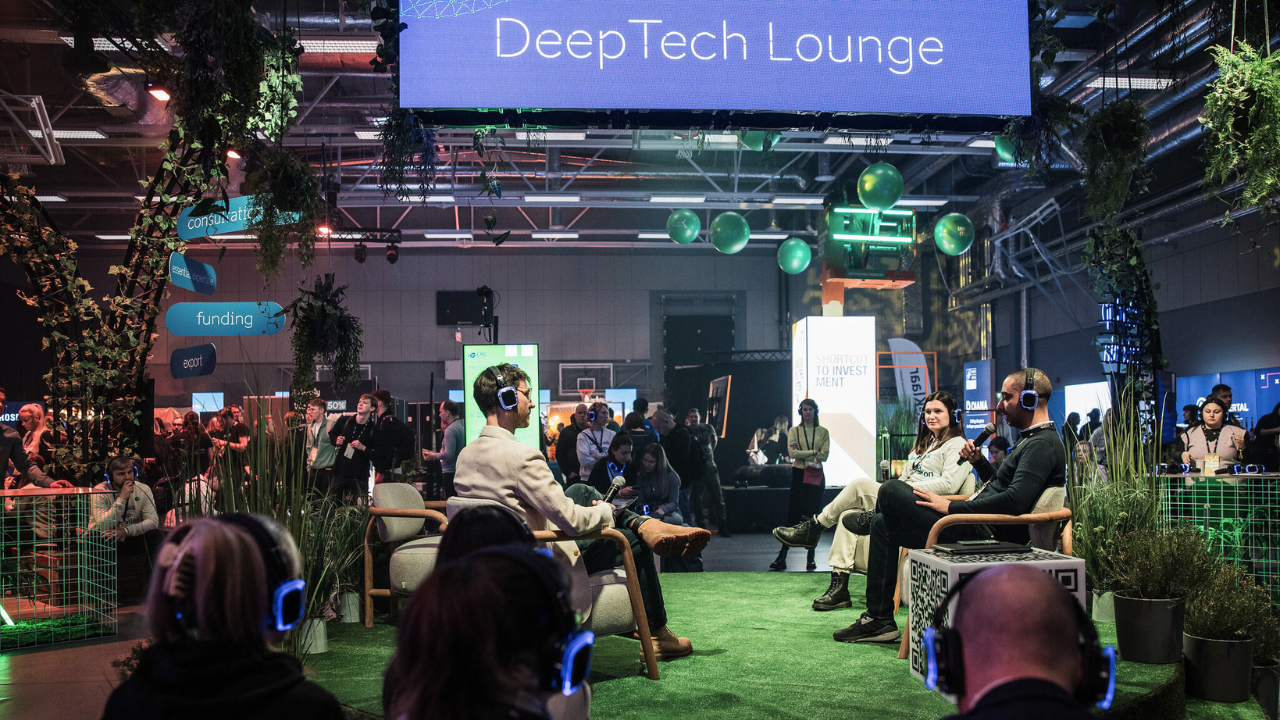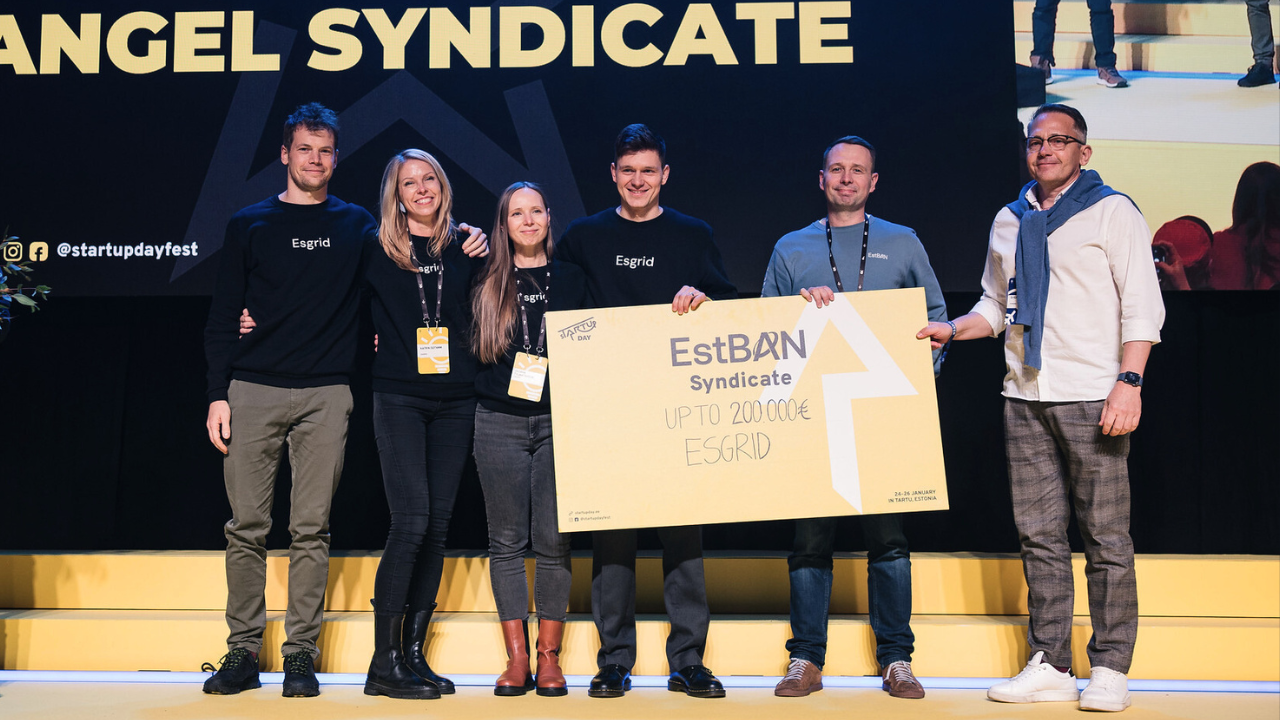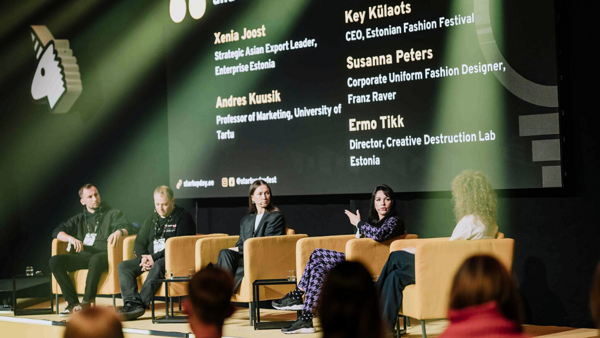
Dress for Success: Estonian Fashion and Corporate Branding
Tartu Centre for Creative Industries hosted at sTARTUp Day 2024 a panel discussion titled “Dress for Success: Estonian Fashion and Corporate Branding”. In the panel, corporate design was discussed by designers, marketers and design clients: Xenia Joost, Andres Kuusik, Ermo Tikk, Key Külaots and Susanna Peters. Here are key insights from the panel.
The summary was written by Tartu Centre for Creative Industries.
Ermo Tikk, who has ordered designer clothing for the sTARTUp Day festival, wore on stage a jacket by the Estonian brand Paul Berg. This earned him a compliment from Andres Kuusik, who commented that the outfit indicates who is stylish and who is not. He himself always wears T-shirts and sweatshirts, which are comfortable and represent the organizations he is associated with. His recent favorites are Creative Destruction Lab hoodies because they are comfortable and practical. Fashion designers Susanna Peters, Key Külaots and Xenia Joost all wore clothes from their brands, so the panel offered a great illustration of clothing as a message and a creator of identity.
Xenia Joost led the discussion and asked intriguing questions from the panelists. Ermo Tikk emphasized that a distinctive team outfit creates a shared identity, and commissioning it is a leader’s signal that they care about their team. Also, people like to have a say in choosing the corporate wear and feel as part of the team.
Susanna Peters highlighted that she designs for companies apparel that is durable, made according to the measurements of the person wearing it, and looks neat even after prolonged daily wear. While companies often order their T-shirts as cheaply as possible, it involves the risk that the clothes won’t fit well and won’t look good after a few months of daily use. For instance, Susanna made a collection for LHV Bank that included many different made-to-measure items. Hence, these were individual orders, and the clothes fit well.
Using the services of a local designer, it is also possible to easily redesign, repair and update clothes. This approach is sustainable and, at the same time, values the individuality of each employee. Susanna stressed that Estonian companies should prefer Estonian designers and local production when ordering corporate wear because Estonian designers are very sustainable, and local production makes it possible to create clothes for each person's body type.
Key Külaots added that it is not always necessary to produce new things in order to achieve a cohesive style. She pointed out that when creating corporate wear for Tartu Centre for Creative Industries, it was decided to redesign the existing jackets of employees. Some team members bought second-hand jackets made of quality material; others bought their old jackets. Zippers became a common stylistic element: each jacket had zippers in different places and in different colors. Removable ribbons were also added as a decorative element to the whole collection but could be easily removed.
Corporate fashion does not need to be expressed through logos or labels printed on clothes. There are other ways to achieve stylistic coherence – designers are able to come up with new creative solutions. Key added that each team has individuals who want to look original even when wearing corporate fashion, and reuse-based design can highlight their uniqueness.
Andres Kuusik reflected on the competitive advantage of Estonian corporate design worldwide. He noted that when we talk about sustainability in Estonian design, then the image of the Estonian state does not support it. We are known as a digital state rather than a sustainable country. He gave the example that the selling point of Scandinavian design is its low ecological footprint and CO2 use. He went on to compare a brand to an assorted chocolate box, where each individual candy is different, but they all share a common box. Through the brand, you can send a message about your company's values and appreciation for your employees.
Xenia Joost summed up the panel with a conclusion that Estonian design is making its way into corporations; yet, in international business, we need to formulate our competitive advantages more clearly and highlight sustainability arguments more prominently.
Read also our interview with Susanna Peters from Franz Raver: "Corporate wear can boost employee well-being and company success."
Ermo Tikk, who has ordered designer clothing for the sTARTUp Day festival, wore on stage a jacket by the Estonian brand Paul Berg. This earned him a compliment from Andres Kuusik, who commented that the outfit indicates who is stylish and who is not. He himself always wears T-shirts and sweatshirts, which are comfortable and represent the organizations he is associated with. His recent favorites are Creative Destruction Lab hoodies because they are comfortable and practical. Fashion designers Susanna Peters, Key Külaots and Xenia Joost all wore clothes from their brands, so the panel offered a great illustration of clothing as a message and a creator of identity.
Xenia Joost led the discussion and asked intriguing questions from the panelists. Ermo Tikk emphasized that a distinctive team outfit creates a shared identity, and commissioning it is a leader’s signal that they care about their team. Also, people like to have a say in choosing the corporate wear and feel as part of the team.
Clothing is part of the team’s motivation package that managers can offer to their employees.
Susanna Peters highlighted that she designs for companies apparel that is durable, made according to the measurements of the person wearing it, and looks neat even after prolonged daily wear. While companies often order their T-shirts as cheaply as possible, it involves the risk that the clothes won’t fit well and won’t look good after a few months of daily use. For instance, Susanna made a collection for LHV Bank that included many different made-to-measure items. Hence, these were individual orders, and the clothes fit well.
Using the services of a local designer, it is also possible to easily redesign, repair and update clothes. This approach is sustainable and, at the same time, values the individuality of each employee. Susanna stressed that Estonian companies should prefer Estonian designers and local production when ordering corporate wear because Estonian designers are very sustainable, and local production makes it possible to create clothes for each person's body type.
Key Külaots added that it is not always necessary to produce new things in order to achieve a cohesive style. She pointed out that when creating corporate wear for Tartu Centre for Creative Industries, it was decided to redesign the existing jackets of employees. Some team members bought second-hand jackets made of quality material; others bought their old jackets. Zippers became a common stylistic element: each jacket had zippers in different places and in different colors. Removable ribbons were also added as a decorative element to the whole collection but could be easily removed.
Additionally, it is not always necessary to print text on corporate apparel as it is not in line with green thinking.
Corporate fashion does not need to be expressed through logos or labels printed on clothes. There are other ways to achieve stylistic coherence – designers are able to come up with new creative solutions. Key added that each team has individuals who want to look original even when wearing corporate fashion, and reuse-based design can highlight their uniqueness.
Andres Kuusik reflected on the competitive advantage of Estonian corporate design worldwide. He noted that when we talk about sustainability in Estonian design, then the image of the Estonian state does not support it. We are known as a digital state rather than a sustainable country. He gave the example that the selling point of Scandinavian design is its low ecological footprint and CO2 use. He went on to compare a brand to an assorted chocolate box, where each individual candy is different, but they all share a common box. Through the brand, you can send a message about your company's values and appreciation for your employees.
Xenia Joost summed up the panel with a conclusion that Estonian design is making its way into corporations; yet, in international business, we need to formulate our competitive advantages more clearly and highlight sustainability arguments more prominently.
Read also our interview with Susanna Peters from Franz Raver: "Corporate wear can boost employee well-being and company success."
Articles you might also like:

Startup Estonia Deep Tech Lounge offered insights for deep tech founders
15.02.2024
For the second time at sTARTUp Day, Startup Estonia hosted the hugely popular Deep Tech Lounge, featuring engaging conversations with experts and...

Meet sTARTUp Pitching 2024 winner Esgrid
13.02.2024
Esgrid snapped up the syndicate investment of up to €200k by the Estonian Business Angels Network (EstBAN) at sTARTUp Pitching 2024 competition....
